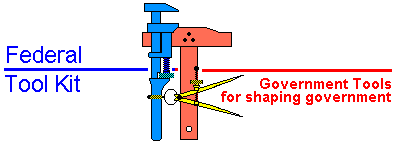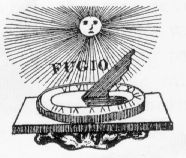
Ascertaining the Status of Bills
and other information
about them
"The law is not the same at morning and at night." George Herbert 1640

"The law is not the same at morning and at night." George Herbert 1640

The tools that allow one to check on the current progress of bills or
elicit other information their fate are rather a mixed bag. They include
calendars and schedules, status reports on legislation and legislative
histories, accounts of floor proceedings (including the Congressional
Record), and even current news stories from the national and Washington-based press.
The last is beyond the scope of this kit, but should be borne in mind as an
important source of information, whether in print or electronic format. Note
that many of the databases cited here are part of the House, GPO, or Thomas
sites: see the Road kit drawer of the Federal Tool
Kit for further information and links to further information about these sites.
Contents
 Jump to the bottom of this page.
Jump to the bottom of this page.

H.R. 2854:
to modify the operation of certain agricultural programs
12:37 A.M. - Motion to reconsider laid on the table
Agreed to without objection.
On agreeing to the conference report
Agreed to by recorded vote: 318 - 89 (Roll no. 107).
PERSIAN GULF WAR SYNDROME
Committee on Government Reform and Oversight: Subcommittee on
Human Resources and Intergovernmental Relations continued hearings on
the Status of Efforts to Identify Persian Gulf War Syndrome, Part
11. Testimony was heard from Thomas Garthwaite, M.D., Deputy
Under Secretary, Health, Department of Veterans Affairs.
Hearings continue May 2.
Contract With America Advancement: By a recorded vote of 328 ayes
to 91 noes, Roll No. 102, the House passed H.R. 3136, to
provide for enactment of the Senior Citizens` Right to Work Act
of 1996, the Line-Item Veto Act, and the Small Business Growth
and Fairness Act of 1996, and to provide for a permanent
increase in the public debt limit.
Reports were made as follows:
S. 1596, to direct a property conveyance in the State of
California. (S. Rept. No. 104-247)
H.R. 255, to designate the Federal Justice Building in Miami,
Florida, as the `James Lawrence King Federal Justice Building`.
H.R. 869, to designate the Federal building and U.S.
Courthouse located at 125 Market Street in Youngstown, Ohio, as
the `Thomas D. Lambros Federal Building and U.S. Courthouse`.
H.R. 1804, to designate the United States Post
Office-Courthouse located at South 6th and Rogers Avenue, Fort
Smith, Arkansas, as the `Judge Isaac C. Parker Federal
Building`.
H.R. 2415, to designate the United States Customs
Administrative Building at the Ysleta/Zaragosa Port of Entry
located at 797 South Ysleta in El Paso, Texas, as the `Timothy
C. McCaghren Customs Administrative Building`.
Committee on Environment and Public Works: Committee ordered
favorably reported the following bills:
H.R. 255, to designate the Federal Justice Building in Miami,
Florida, as the `James Lawrence King Federal Justice Building`;
H.R. 869, to designate the Federal building and U.S.
Courthouse located at 125 Market Street in Youngstown, Ohio, as
the `Thomas D. Lambros Federal Building and U.S. Courthouse`;
H.R. 1804, to designate the United States Post
Office-Courthouse located at South 6th and Rogers Avenue, Fort
Smith, Arkansas, as the `Judge Isaac C. Parker Federal
Building.
...for the 104th Congress may be searched (and most versions also allow searches of the less useful CR Index):
At GPO, the latest Congressional Record database (the source of all the others) contains the daily issues of the Congressional Record for the 104th Congress, 2nd Session Volume 142 (1996). It is the official record of the proceedings and debates of the United States Congress. It is updated between 9:00 a.m. and 11:00 a.m., Eastern time each day the Congressional Record is published, depending on when Congress adjourned the previous day. The daily issues of the Congressional Record for the 104 the Congress, First Session (1995) and the 103d Congress, 2nd Session (1994) are also available.
Each document in the 1196 and 1995 Congressional Record databases display an identification code in the results list followed by the initial words of the title. For example: cr06fe95H LINE-ITEM VETO ACT. In this example, cr stands for Congressional Record, 06fe95 is the issue date, and H indicates that the document is from the House section. Other section identifiers are D for Daily Digest; E for Extensions of Remarks; and S for Senate. There are no section identifiers in the 1994 Congressional Record database. Congressional Record documents are internally divided into the following fields:
Date: Issue date of the Congressional Record Section: Section of the Congressional Record Digest: Daily Digest Pages Senate: Senate portion of the Congressional Record House: House portion of the Congressional Record Extensions: Extension of Remarks
A field can be searched by typing the field name, followed by an equals sign (=), followed by the term or terms that are sought. Numeric fields, such as the date field, can use the greater than (>) and less than (<) symbols to search a range of numbers. All queries that do not specify a field search the entire document. There are no fields in the 1994 Congressional Record database.

 Or use the legislative history tools described in the next section;
the GPO, Thomas, and LegiSlate databases, among others,
include a "summary and status" or "bill history" that provides
a status report; and most databases yield "status" as a class of
information (alongside "actions"
or "major actions" which sometimes amount to the same thing)
as a result of any search.
Or use the legislative history tools described in the next section;
the GPO, Thomas, and LegiSlate databases, among others,
include a "summary and status" or "bill history" that provides
a status report; and most databases yield "status" as a class of
information (alongside "actions"
or "major actions" which sometimes amount to the same thing)
as a result of any search.
A basic legislative history can be compiled using the basic database tools. For a full discussion, see the Legislative History page produced by the University of Michigan Document Center. In general, one should use any or all of the following in combination:
The 1996 History of Bills and Resolutions is a section of the 1996 Congressional Record Index (Vol.142) that provides information about all bills and resolutions introduced during the 2nd session of the 104th Congress. The database is updated daily, usually the day after publication of the record. The 1995 and 1994 History of Bills and Resolutions database provides information about the 104th Congress 1st session and the 103d Congress 1st and 2nd session. Entries for each bill include actions that are reported in the Congressional Record and reference issue and date and pages where the action is reported.
The results given by LegiSlate are more explicit than most, but illustrate the general procedure as well as the need for using several resources and approaches. In LegiSlate, once a bill or resolution has been selected, the following documents are available (not all available publicly). Using the same sample search shown elsewhere in the Federal Tool Kit:
H.Con.Res. 69: Title, Legi-Slate Overview & Outlook
H.Con.Res. 69: Title & Current Status
H.Con.Res. 69: Names of Cosponsors
H.Con.Res. 69: Congressional Research Service Bill Digest
H.Con.Res. 69: Bill Text - List of Versions Published
H.Con.Res. 69: Bill Text - Most Recent Version
H.Con.Res. 69: Status - Major Actions
H.Con.Res. 69: Status - All Actions
H.Con.Res. 69: Pending Committee & Floor Actions
H.Con.Res. 69: Committee Reports Filed
H.Con.Res. 69: Roll Call Votes
H.Con.Res. 69: List of Remarks in the "Congressional Record"
H.Con.Res. 69: Laws Bill Would Amend or Repeal
H.Con.Res. 69: List of "Washington Post" Articles
H.Con.Res. 69: List of "National Journal" Articles
H.Con.Res. 69: List of "Congressional Quarterly Weekly Report" Articles
H.Con.Res. 69: Counterpart, Companion Bills
Investigating all of these items, one soon discovers that they are not
uniformly updated. Under "Current Status," for example, one is told that
the resolution, submitted on 5/18/95, received no consponsors; but under
"Cosponsors" is a list of eight who attached their names to the resolution
on 6 June. Under Status and Pending Actions, one learns that the resolution
was referred to the House Judiciary Committee, and that no action was or
is pending on it. In brief, the resolution was apparently a gesture,
rather than a serious piece of legislation; No remarks on it appear in
the CR (at least according to LegiSlate), and no articles refer to it.
 The best source is the Calendar
database hosted by GPO Access.
The best source is the Calendar
database hosted by GPO Access.
At GPO, the House and Senate Calendars are separate databases. The Senate Calendar database contains the current issue of the Senate Calendar for the 104th Congress (1995-1996). The Senate calendar is published daily when the Senate is in session. It contains a listing of daily Senate activities only. The House Calendar is cumulative and contains a history of House and Senate bills and resolutions that have been reported or considered by either house. Every Monday issue of the House Calendar contains a Subject Index.
 The House also publishes its
own calendar on the web, showing, among other things, the periods
during which the House is scheduled to be in recess. These
dates may change as the year progresses, of course.
The House also publishes its
own calendar on the web, showing, among other things, the periods
during which the House is scheduled to be in recess. These
dates may change as the year progresses, of course.
PROGRAM FOR THE REMAINDER OF THE WEEK
WEEK OF MARCH 17, 1996
MONDAY - MARCH 18, 1996
The House meets at 2:00 p.m.
Pro forma session.
TUESDAY - MARCH 19, 1996
The House meets at 12:30 p.m.
The House is scheduled to convene at 12:30 p.m. for
Morning Hour speeches and at 2 p.m. for legislative
business. The House is scheduled to consider 5 measures
under suspension of the rules, including an as yet
unnumbered concurrent resolution and an as yet unnumbered
simple resolution relating to the adoption of the
Congressional Accountability regulations.
The House may then begin consideration of Immigration Reform,
subject to a rule being granted.
POSSIBLE CONSIDERATIONS:
------------------------
1) H.R. 2937 -
for the reimbursement of legal expenses and related
fees incurred by former employees of the White House
Travel Office with respect to the termination of their
employment in that Office on May 19, 1993
2) H. Con. Res. 148 -
expressing the sense of the Congress that the United States
is committed to the military stability of the Taiwan Straits
Etc.
APR 15, 1996 (MONDAY)
10:00 AM COMMITTEE ON BANKING AND FINANCIAL SERVICES,
LOCATION: 2128 RHOB
Full Committee,
OPEN. HEARING. On Personal Banking Fraud.
Often one's first word of pending legislation comes via the news media. Though the the Federal Government publishes some "news" (and it may be worthwhile keeping track of Presidential and Congressional press releases, for example), most resources in this category are by definition excluded from consideration by the Federal Tool Kit. Still, a start can be made by looking at: